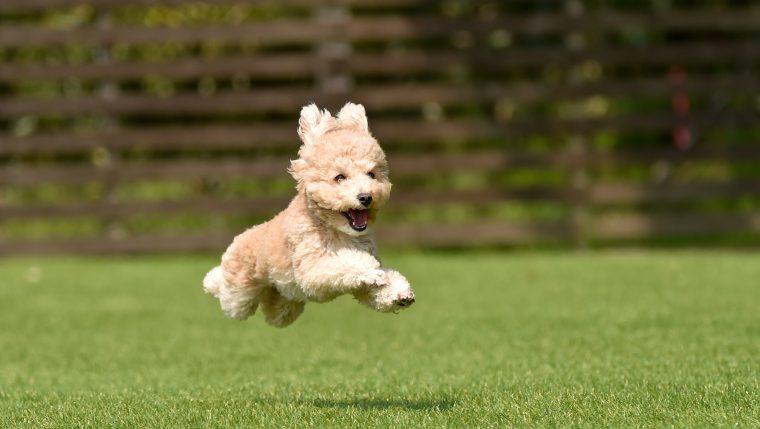
Springtime is a season of change, and that’s as true for our furry friends as it is for us. As the weather warms up, you may notice your dog acting a little differently than they did during the winter months. Here are five springtime behavior changes you might observe in your dog, and suggestions on how to handle them.
Increased energy and playfulness
After a winter spent mostly indoors, dogs can get a little stir-crazy. When the weather starts to warm up, they may suddenly seem more energetic and playful than they did during the colder months. This is perfectly normal behavior, and it’s a sign that your dog is excited to spend more time outside.
What to do: Embrace your dog’s newfound energy! Take them on longer walks, play fetch in the park, or try out a new agility course. According to Dogster, “Exercise is a potent stress reliever for all animals, and a regular walk and outdoor play schedule will enhance a dog’s life immeasurably.” Just be sure to increase your dog’s exercise gradually, especially if they’ve been mostly sedentary over the winter.
More frequent shedding
As the days get longer, dogs start to shed their winter coats in preparation for the warmer weather. This shedding can be more noticeable in some breeds than others, but it’s generally a sign that your dog’s body is adjusting to the seasonal change.
What to do: Invest in a good grooming tool, like a de-shedding brush, to help keep your dog’s shedding under control. You may also want to consider bringing your dog to a professional groomer for a springtime haircut.
Increased appetite
As the weather gets warmer, your dog’s metabolism may start to speed up. This can lead to an increased appetite, as your dog’s body craves more energy to fuel all that extra playtime.
What to do: Make sure you’re feeding your dog a healthy, balanced diet that’s appropriate for their size and age. If you’re concerned that your dog is overeating, try dividing their meals into smaller portions throughout the day instead of feeding them one or two large meals.
Social butterfly behavior
Dogs are social animals, and they love spending time with their human and canine companions. In the spring, you may notice your dog becoming more social than they were during the winter months.
What to do: Take advantage of this social behavior by scheduling playdates with other dogs, or by taking your dog to a dog park or beach where they can interact with other pups. Just be sure to supervise your dog’s playtime and make sure they’re playing safely.
Increased anxiety or restlessness
While many dogs become more energetic in the spring, some may experience increased anxiety or restlessness. This can be due to a variety of factors, including changes in routine, seasonal allergies, or the stress of being cooped up inside all winter.
What to do: If you notice your dog exhibiting signs of anxiety or restlessness, such as excessive barking, panting, or pacing, it’s important to address the issue as soon as possible. Try to identify the root cause of your dog’s anxiety, and work with a professional trainer or behaviorist to develop a plan to help your dog feel more calm and secure.
Embrace spring fever
Spring is a time of renewal and growth, and it’s also a time when dogs can exhibit a variety of behavior changes. By understanding these changes and knowing what to do in response, you can help your furry friend have a happy and healthy spring season!
This article was written in collaboration with ChatGPT.




